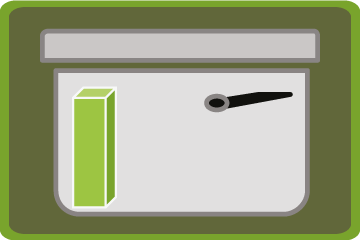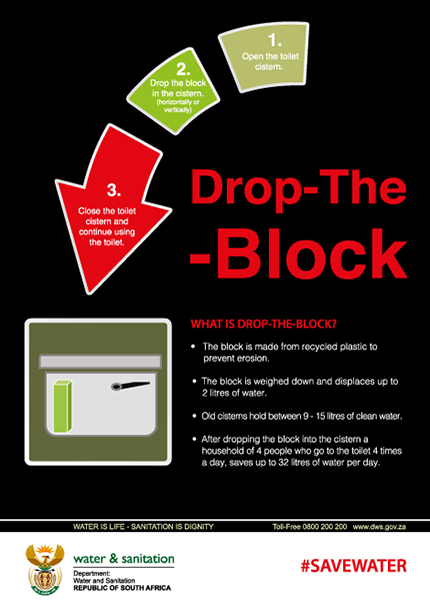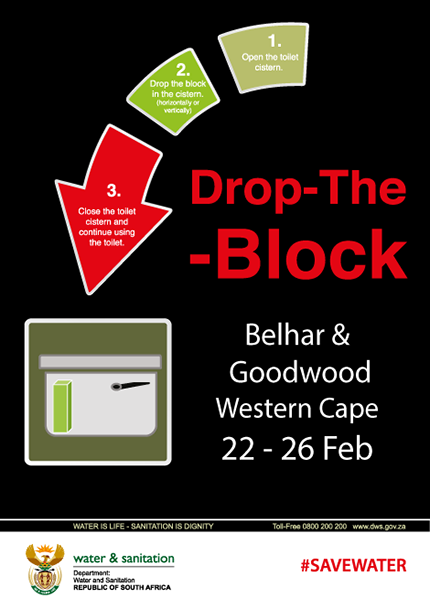Drop-the-Block
South Africa is a water scarce country with highly variable rainfall and water runoff. Most of our water is obtained from rainfall therefore we are susceptible to sustained water stressed situations caused by prolonged periods of below average rainfall within a season.
The Department of Water and Sanitation (DWS) calls on all of us to make lifestyle changes to reduce water consumption and stretch the water drop.
In their efforts to assist all citizens to reduce the use of water the DWS is running a campaign promoting water use efficiency called Drop-the-Block, which highlights the method of dropping a plastic block into the toilet cistern to help reduce the volume of water used when you flush your toilet.
Drop-the-Block is based on the principle of displacing just enough water to still enable the flushing of the toilet. Currently cisterns hold 9-15 litres of clean drinking water which is dispensed with each flush.
This varies with dual flush toilets which dispenses about 55% (5-8 litres) of water for the smaller mechanism and 95% (8.5–14 litres)for the larger mechanism.
The intervention is immediate, and requires little technical skill for installation.
Drop-the-Block explained
- The block is made from recycled plastic to prevent erosion.
- The block is weighed down with sand and displaces up to 2 litres of water.
- Old cisterns hold 9 – 15 litres of clean water.
- After dropping the block into the cistern a household of 4 people who go to the toilet 4 times a day, saves up to 32 litres of water per day.
- The block is also portable, solid and durable
The installation of the block aims to achieve a drop in:
- the amount of water used per household,
- the amount of money spent on water bills,
- the impact of cleaning water for potable use,
- the costs of getting the water to the user. International norms for energy consumption show that in developed countries, water supplies consume between 2% and 3% of all energy produced, and
- The non-revenue water which is close to 40% of the total input water volume in South Africa.
Water saving tips
- Turn the tap off between washing your face, brushing your teeth or shaving.
- Take a 5-minute shower a day, instead of a bath.
- If you prefer to bath, don’t fill up the bath tub.
- If it is yellow, let it mellow. If it is brown, flush it down.
- Kettles shouldn’t be filled to the brim but with just enough water for your needs.
- Take shorter showers and turn off the shower while soaping up, then turn it back on to rinse.
- Make sure you put a full load into your washing machine and dishwasher before starting a wash cycle.
For more water saving tips please read: How to manage water restrictions at your home.
Listen how easy it is to save water
Water saving roadshow
The DWS will be visiting the Goodwood and Belhar Parliamentary villages, as well as the surrounding suburbs from 22 - 26 February 2016 to create greater awareness on simple water saving techniques.
For more information about the Drop-the-Block initiative or the roadshows, please contact the DWS at 0800 200200 (toll free).
Reduce the water that you use to flush your toilet and #SAVEWATER
 |
 |


